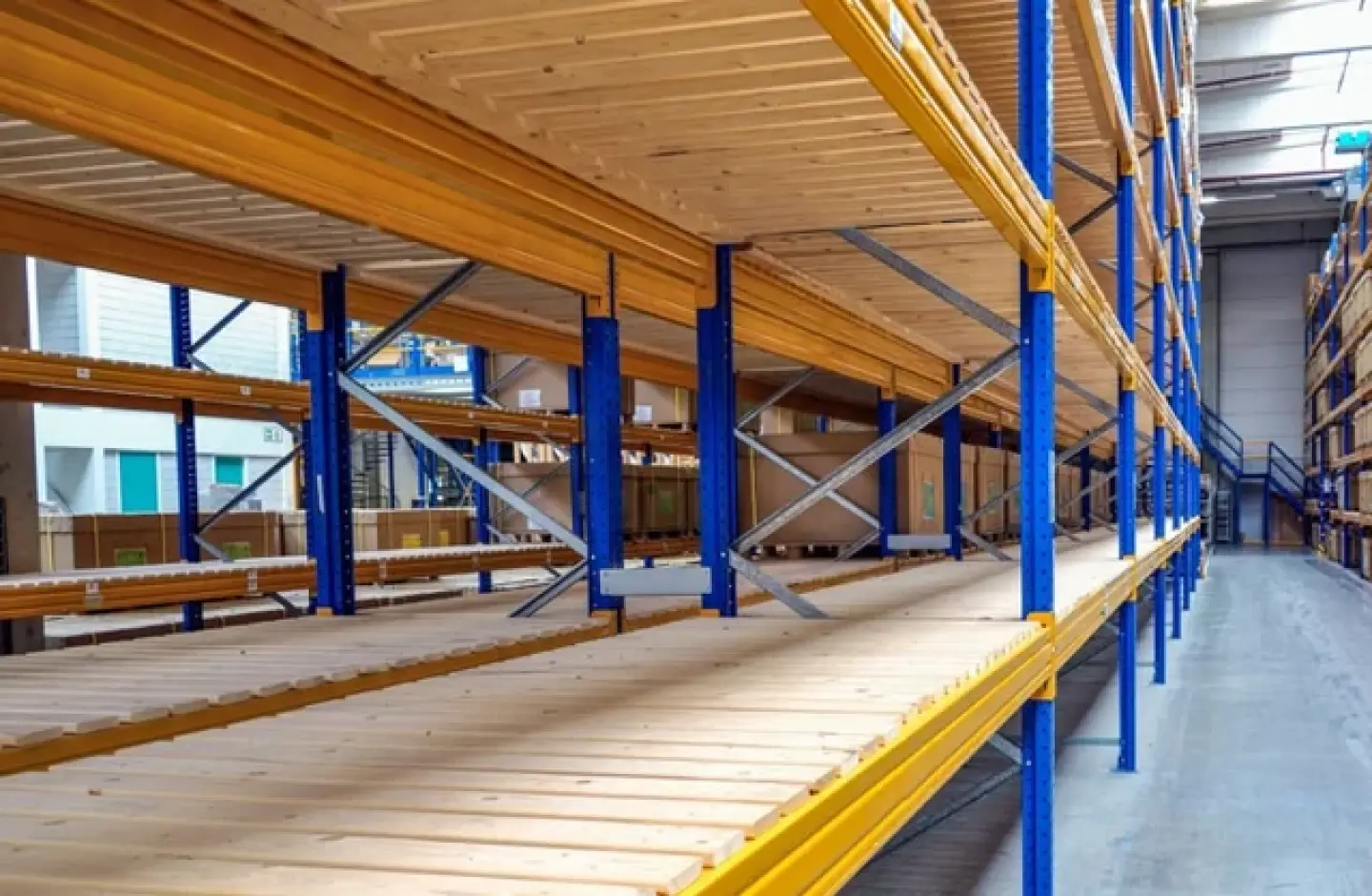In today’s interconnected world, supply chain disruptions have become a common challenge for businesses across industries. From natural disasters to political unrest and global pandemics, the modern world presents many obstacles that can disrupt the smooth flow of goods and services.
Click Here: Effectively Manage Your Inventory With This Advanced and Affordable WMS
In this article, we will explore the strategies and solutions that businesses can employ to navigate these stormy waters, overcome disruptions, and orchestrate the supply chain. We will delve into the importance of having a robust risk management plan in place, the role of technology in mitigating disruptions, and the significance of collaboration and communication with suppliers and partners. Read the full article to learn more.
Understanding Supply Chain Disruptions
Supply chain disruptions are any event or occurrence interrupting the flow of goods, services, or information within a supply chain network. These disruptions can have far-reaching consequences, impacting not only the businesses directly involved but also their customers, suppliers, and other stakeholders. Understanding the root causes of these disruptions is crucial for developing effective strategies to mitigate their impact.
Also, businesses must recognize that supply chain disruptions are not isolated incidents but a part of the modern business landscape. By acknowledging this reality and understanding the various causes of disruptions, businesses can begin to develop strategies to navigate these challenges effectively.

What are the Primary Causes of Supply Chain Disruptions?
Supply chain disruptions can arise from many sources, and businesses must be prepared to address them proactively. Here are some of the most common causes of supply chain disruptions:
- Natural disasters: Earthquakes, hurricanes, floods, and wildfires can severely impact supply chains by damaging infrastructure, disrupting transportation networks, and interrupting production.
- Political instability: Political unrest, civil wars, and government policy changes can lead to supply chain disruptions. Trade disputes and regulatory changes can also cause significant disruptions by imposing restrictions on imports and exports.
- Global pandemics: Health crises, such as the COVID-19 pandemic, can profoundly impact supply chains. Lockdown measures, travel restrictions, and labor shortages can disrupt production, transportation, and sourcing, leading to delays, shortages, and increased costs.
- Supplier failures: If a key supplier experiences financial difficulties, bankruptcy, or operational issues, it can disrupt the entire supply chain. Reliance on a single supplier without backup options can leave businesses vulnerable to disruptions.
- Quality issues: Product recalls, quality defects, or safety concerns can lead to disruptions in the supply chain. These issues may require production halts, product replacements, or changes in sourcing, causing delays and increased costs.
By identifying and understanding the common causes of supply chain disruptions, businesses can take steps to mitigate their impact and build resilience into their supply chain operations.
Impact of Supply Chain Disruptions on Businesses
Supply chain disruptions can have significant consequences for businesses, affecting their operations, finances, and reputation. Understanding the potential impact of disruptions is crucial for implementing effective strategies to minimize their consequences.
- Operational disruptions: Supply chain disruptions can lead to production delays, shortages of raw materials or finished goods, and disruptions in transportation and logistics. These operational disruptions can result in lost sales, decreased customer satisfaction, and increased costs.
- Financial implications: Businesses may experience increased costs due to expedited shipping, alternative sourcing, or production delays. Additionally, disruptions can lead to revenue losses if customers seek alternative suppliers or contractual obligations cannot be met. In extreme cases, supply chain disruptions can even threaten the financial stability of a business.
- Reputational damage: Supply chain disruptions can tarnish a business’s reputation, especially if they result in product recalls, customer dissatisfaction, or an inability to fulfill commitments. Negative publicity and loss of customer trust can have long-lasting effects on a company’s brand and market position.
- Legal and regulatory compliance: Supply chain disruptions have legal and regulatory implications. For example, failure to meet contractual obligations or comply with import/export regulations can result in penalties or legal disputes.
Supply chain disruptions can have far-reaching consequences for businesses. Therefore, implementing strategies to minimize their impact and ensure continuity is essential for long-term success.
Strategies to Avoid Supply Chain Disruptions
To navigate supply chain disruptions successfully, businesses must adopt proactive strategies that build resilience and flexibility in their operations. Here are some key strategies for mitigating the impact of disruptions:
- Developing a robust risk management plan: A comprehensive risk management plan is the foundation for effectively managing supply chain disruptions. This plan should include an assessment of potential risks, strategies for mitigating those risks, and contingency plans for responding to disruptions when they occur. Regular reviews and updates to the risk management plan are essential to adapt to changing circumstances.
- Building redundancy in the supply chain: Having multiple suppliers, production facilities, or transportation options can help mitigate the impact of disruptions. By diversifying sourcing locations and establishing backup options, businesses can minimize the risk of a single point of failure in their supply chain.
- Investing in real-time tracking and visibility: Real-time tracking systems can give businesses greater visibility into their supply chains, allowing them to monitor inventory levels, track shipments, and identify potential disruptions in advance. This visibility enables businesses to proactively address issues and minimize the impact of disruptions.
- Collaborating with suppliers and partners: Building strong relationships and open lines of communication with suppliers and partners is crucial for effectively managing supply chain disruptions. By working together, businesses can share information, coordinate response efforts, and develop contingency plans that benefit all parties involved.
- Implementing data analytics and predictive modeling: Leveraging data analytics and predictive modeling can help businesses identify patterns, forecast potential disruptions, and make informed decisions. By analyzing historical data, businesses can gain insights into supply chain vulnerabilities and proactively implement measures to address them.
By implementing these strategies, businesses can enhance their resilience and minimize the impact of supply chain disruptions. However, it is important to note that there is no one-size-fits-all solution, and each business must tailor its approach to its specific industry, supply chain network, and risk profile.
Developing a Resilient Supply Chain
Building a resilient supply chain requires a holistic approach encompassing all aspects of the network. Here are some key considerations for developing a resilient supply chain:
- Identifying critical components and suppliers: Understand which components or suppliers are critical to your operations and prioritize efforts to build redundancy and alternative sourcing options for these components.
- Establishing a supplier qualification process: Implement a robust supplier qualification process that assesses suppliers’ financial stability, operational capabilities, and risk management practices. This process ensures that suppliers are reliable and able to withstand disruptions.
- Creating a contingency plan: Develop a contingency plan that outlines specific actions to be taken during disruptions. This plan should include alternative sourcing options, backup suppliers, and clear communication protocols to ensure a coordinated response.
- Regularly testing and updating the contingency plan: Regularly test the effectiveness of the contingency plan through simulation exercises or tabletop drills. Identify areas for improvement and update the plan accordingly to address emerging risks.
- Investing in supply chain visibility and analytics: Implement technologies that provide real-time visibility into the supply chain and enable data-driven decision-making. This visibility allows businesses to identify potential disruptions, assess their impact, and take proactive measures to minimize their consequences.
Developing a resilient supply chain requires a long-term commitment and continuous improvement. By incorporating these considerations into their supply chain management practices, businesses can enhance their ability to navigate disruptions and ensure continuity in their operations.
Leveraging Technology to Navigate Supply Chain Disruptions
Technology plays a crucial role in mitigating the impact of supply chain disruptions. Here are some key technologies that businesses can leverage to navigate these challenges:
- Artificial Intelligence (AI): AI-powered algorithms can analyze vast amounts of data to identify patterns, forecast potential disruptions, and make data-driven decisions. AI can also automate processes, such as demand forecasting and inventory management, to optimize supply chain operations.
- Cloud computing: Cloud-based platforms provide businesses with scalable and flexible solutions for managing their supply chains. These platforms enable real-time collaboration, data sharing, and analytics, allowing businesses to respond quickly to disruptions and make informed decisions.
- Internet of Things (IoT): IoT devices can provide real-time data on the condition and location of goods throughout the supply chain. This data enables businesses to track shipments, monitor inventory levels, and identify potential disruptions in advance.
- Blockchain: Blockchain technology can enhance transparency and trust in supply chain operations. By creating an immutable record of transactions, blockchain can help businesses track the movement of goods, verify authenticity, and ensure compliance with regulatory requirements.
- Predictive analytics: By leveraging historical data and advanced analytics techniques, businesses can develop predictive models that forecast potential disruptions and their impact on the supply chain. This foresight enables businesses to take proactive measures to mitigate risks and minimize the impact of disruptions.
Businesses must assess their specific needs and capabilities when adopting these technologies. Implementing the right technology solutions can significantly enhance a business’s ability to navigate supply chain disruptions and ensure continuity in operations.
Collaborating With Suppliers and Partners to Minimize Disruptions
Collaboration and communication with suppliers and partners are critical for effectively managing supply chain disruptions. Here are some key strategies for fostering collaboration:
- Open lines of communication: Establish regular communication channels with suppliers and partners to exchange information, share insights, and coordinate response efforts. This communication should be proactive, transparent, and focused on problem-solving.
- Sharing data and insights: Share relevant data and insights with suppliers and partners to facilitate joint decision-making and develop a common understanding of potential risks and mitigation strategies.
- Developing joint contingency plans: Work with suppliers and partners to develop joint contingency plans that outline specific actions to be taken during disruptions. These plans should be regularly reviewed and updated to address emerging risks.
- Building strategic relationships: Develop relationships with key suppliers and partners based on trust, mutual benefit, and a shared commitment to resilience. These relationships can foster collaboration, enable information sharing, and create a shared responsibility for managing disruptions.
By collaborating with suppliers and partners, businesses can leverage collective expertise and resources to minimize the impact of supply chain disruptions. This collaborative approach fosters resilience, enhances response capabilities, and strengthens the supply chain network.

The Role of Data Analytics in Managing Supply Chain Disruptions
Data analytics plays a crucial role in managing supply chain disruptions. By harnessing the power of data, businesses can gain valuable insights, identify patterns, and make informed decisions. Here’s how data analytics can help:
- Identifying vulnerabilities: Data analytics can help businesses identify vulnerabilities in their supply chains by analyzing historical data, identifying patterns, and assessing potential risks. This insight enables businesses to proactively implement measures to mitigate those vulnerabilities.
- Risk forecasting: By analyzing historical data and external factors, businesses can develop predictive models that forecast potential disruptions and their impact on the supply chain. This forecasting enables businesses to take proactive measures and develop contingency plans to minimize the impact of disruptions.
- Real-time monitoring: Real-time data analytics allows businesses to monitor the performance of their supply chains and identify potential disruptions in advance. By tracking key performance indicators (KPIs), businesses can quickly recognize deviations from normal operations and take immediate action to address them.
- Optimizing inventory management: Data analytics can optimize inventory management by analyzing demand patterns, identifying slow-moving or obsolete items, and optimizing replenishment strategies. This optimization ensures businesses have the proper inventory levels to meet customer demand while minimizing excess inventory and associated costs.
- Continuous improvement: By analyzing supply chain data, businesses can identify areas for improvement, optimize processes, and enhance overall supply chain performance. This continuous improvement mindset ensures that businesses constantly adapt to changing circumstances and improve their ability to navigate disruptions.
Data analytics is a powerful tool that enables businesses to make data-driven decisions, improve operational efficiency, and enhance their resilience in supply chain disruptions. By harnessing the power of data, businesses can gain a competitive edge and ensure continuity in their operations.
Conclusion: Building A Resilient Supply Chain for the Future
In today’s interconnected world, businesses grapple with a ubiquitous challenge – supply chain disruptions. These disruptions, stemming from natural disasters, political upheaval, and global pandemics, can lead to operational setbacks, financial strain, reputational damage, and legal complexities.
To combat these challenges, businesses are urged to embrace strategies that encompass redundancy, real-time tracking, data analytics, and robust collaboration. Additionally, technology, including AI, cloud computing, IoT, blockchain, and predictive analytics, proves pivotal in mitigating disruptions, bolstering operational resilience, and orchestrating the supply chain.
For more information about streamlining warehouse operations or the latest warehouse technologies trends, you can follow us on LinkedIn, YouTube, X, or Facebook. If you have other inquiries or suggestions, don’t hesitate to contact us here. We’ll be happy to hear from you.












